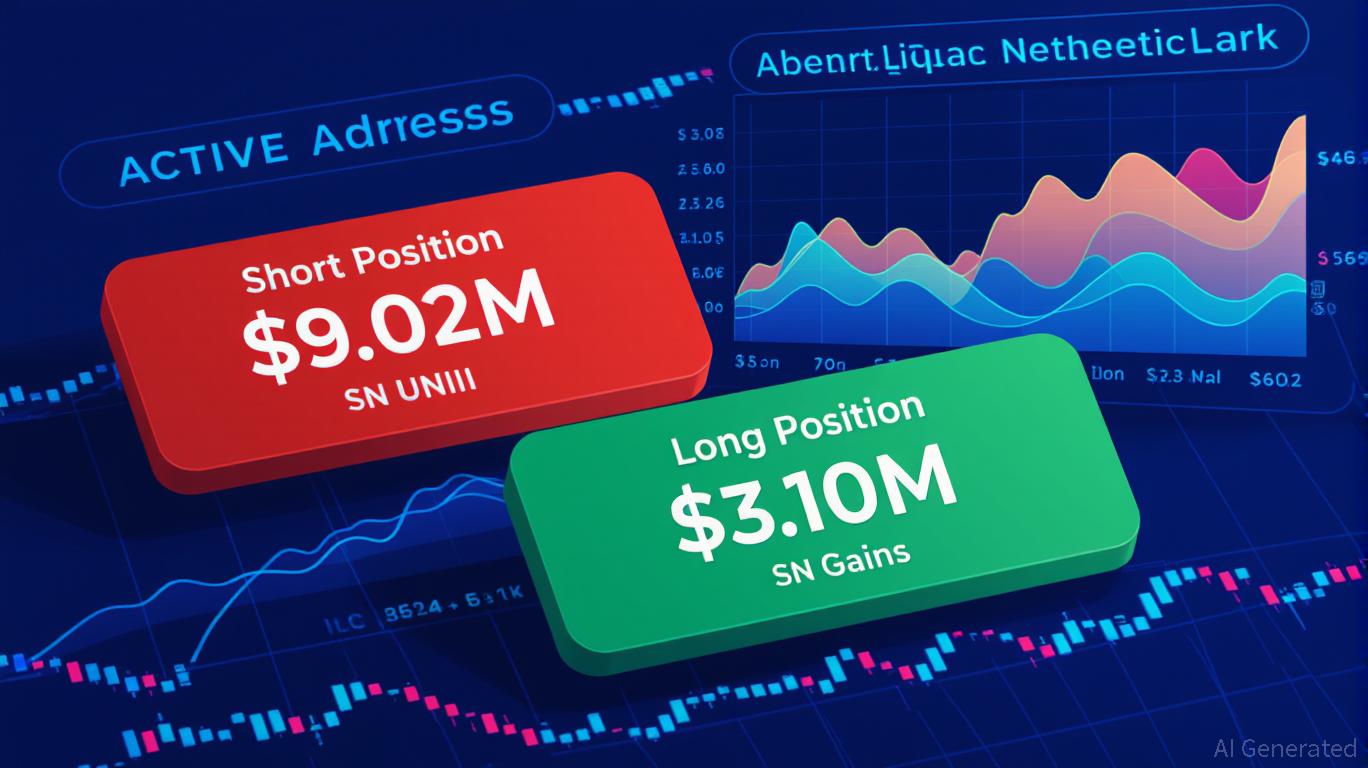JPMorgan and DBS Develop Cross-Chain Bridge to Compete with Stablecoin Leaders
- JPMorgan and DBS Bank launch cross-chain framework for real-time tokenized deposit transfers between institutional clients, bypassing traditional payment systems. - The "interoperability highway" enables 24/7 settlements across public/private blockchains while maintaining consistent token value, expanding cross-border transaction capabilities. - As 1/3 of global banks explore tokenized deposits, the partnership challenges stablecoin dominance by offering institutional-grade cross-chain solutions with red
JPMorgan Chase & Co. and DBS Bank, Singapore’s top financial institution, are working together to develop a cross-chain system that will enable institutional clients to transfer tokenized deposits instantly. This represents a significant evolution in how established banks are building digital asset infrastructure, according to a
This collaboration builds on JPMorgan’s recent ventures into decentralized finance (DeFi), such as issuing a USD deposit token on Coinbase’s Base blockchain, as noted by
This trend underscores intensifying rivalry in the stablecoin and tokenized asset sectors. Although U.S. dollar-backed stablecoins like
At the same time, Asian economies are forging their own approaches. Japan has introduced one of the earliest regulatory frameworks for stablecoins, while Singapore’s DBS is using its alliance with
Some critics point out that tokenized deposits, despite their potential, still face obstacles related to scalability and regulatory compliance. Nonetheless, supporters such as DBS’s Rachel Chew highlight the adaptability these solutions provide for global enterprises, allowing for instant settlements and greater access for institutional clients, according to a Coinpedia report. As the sector continues to develop, the progress of frameworks like those from JPMorgan and DBS could establish new standards for interoperability and institutional use in cross-chain environments.
Disclaimer: The content of this article solely reflects the author's opinion and does not represent the platform in any capacity. This article is not intended to serve as a reference for making investment decisions.
You may also like
Quantum Computing Could Break Bitcoin Security — Here’s What You Can Do Now to Secure Your BTC

U.S. Pushes for Transparent Mineral Supply Chains — IOTA-Powered Salus Steps In

Hyperliquid (HYPE) Price Rally: Increased On-Chain Engagement and Institutional Interest Drive Expansion Prospects
- Hyperliquid's HYPE token surged 32% driven by whale trading and institutional adoption via HIP-3 framework. - Whale activity shows $9M UNI short vs. $3.1M long positions, highlighting platform's speculative role in volatile assets. - Institutional partnerships with RedStone and Felix, plus 21Shares' ETF application, signal growing market confidence. - TVL reached $5B with 73% decentralized trading share, but regulatory gaps and leadership changes pose sustainability risks.

The Growing Fascination with Hyperliquid: Is This the Next Evolution in Cryptocurrency Trading?
- Hyperliquid dominates decentralized trading in 2025 with $303B Q3 volume, 62% perpetual DEX open interest, and $5B TVL growth. - Ecosystem expansion includes HyperEVM (100+ protocols, $2B TVL) and USDH stablecoin (backed by BlackRock , $2.2M trading volume). - Institutional adoption grows via 21Shares' ETF application, but risks include regulatory scrutiny, 16-validator security vulnerabilities, and HYPE token volatility. - Competitors like Aster (near-$30B daily volume) challenge Hyperliquid's dominance
